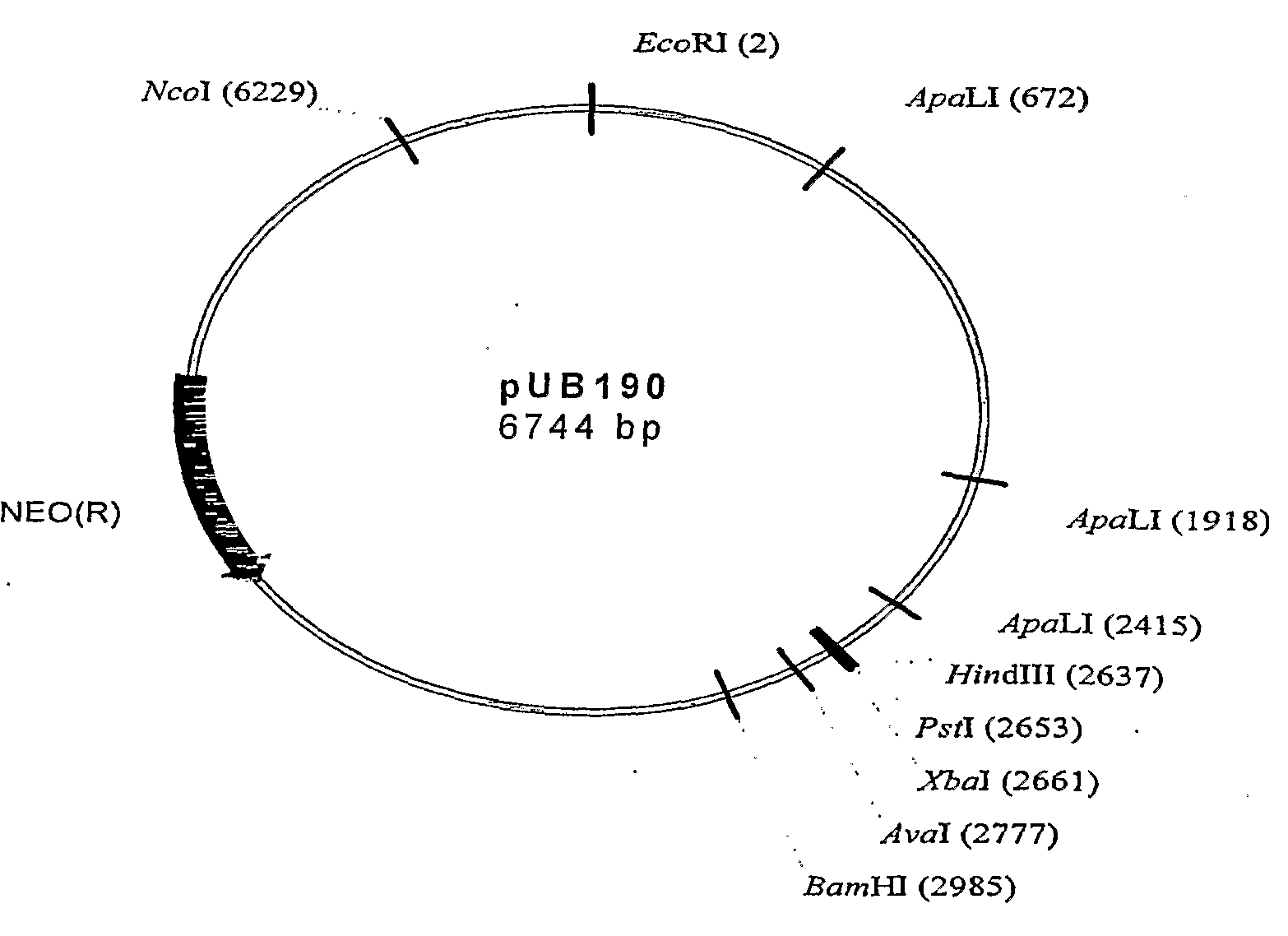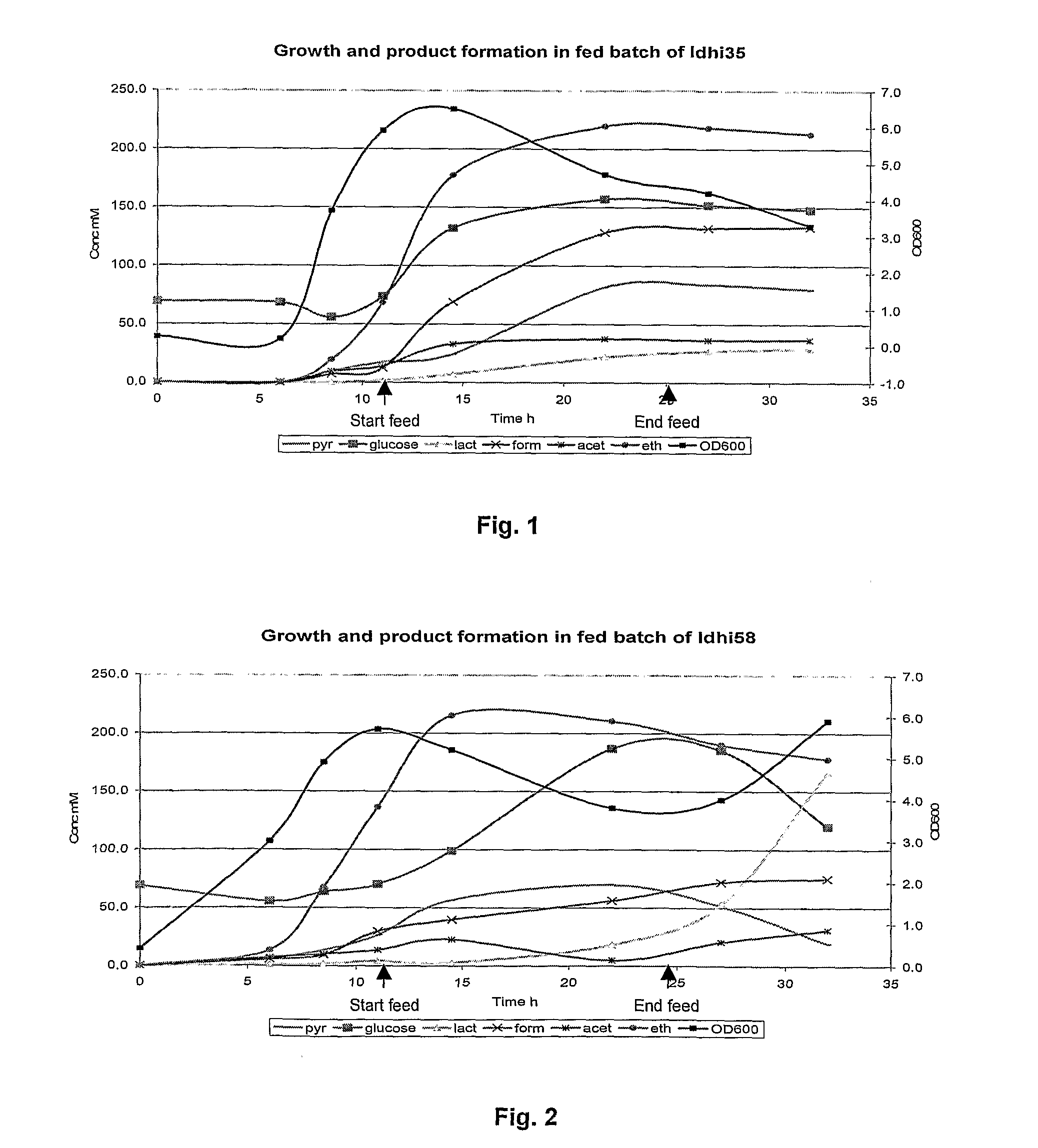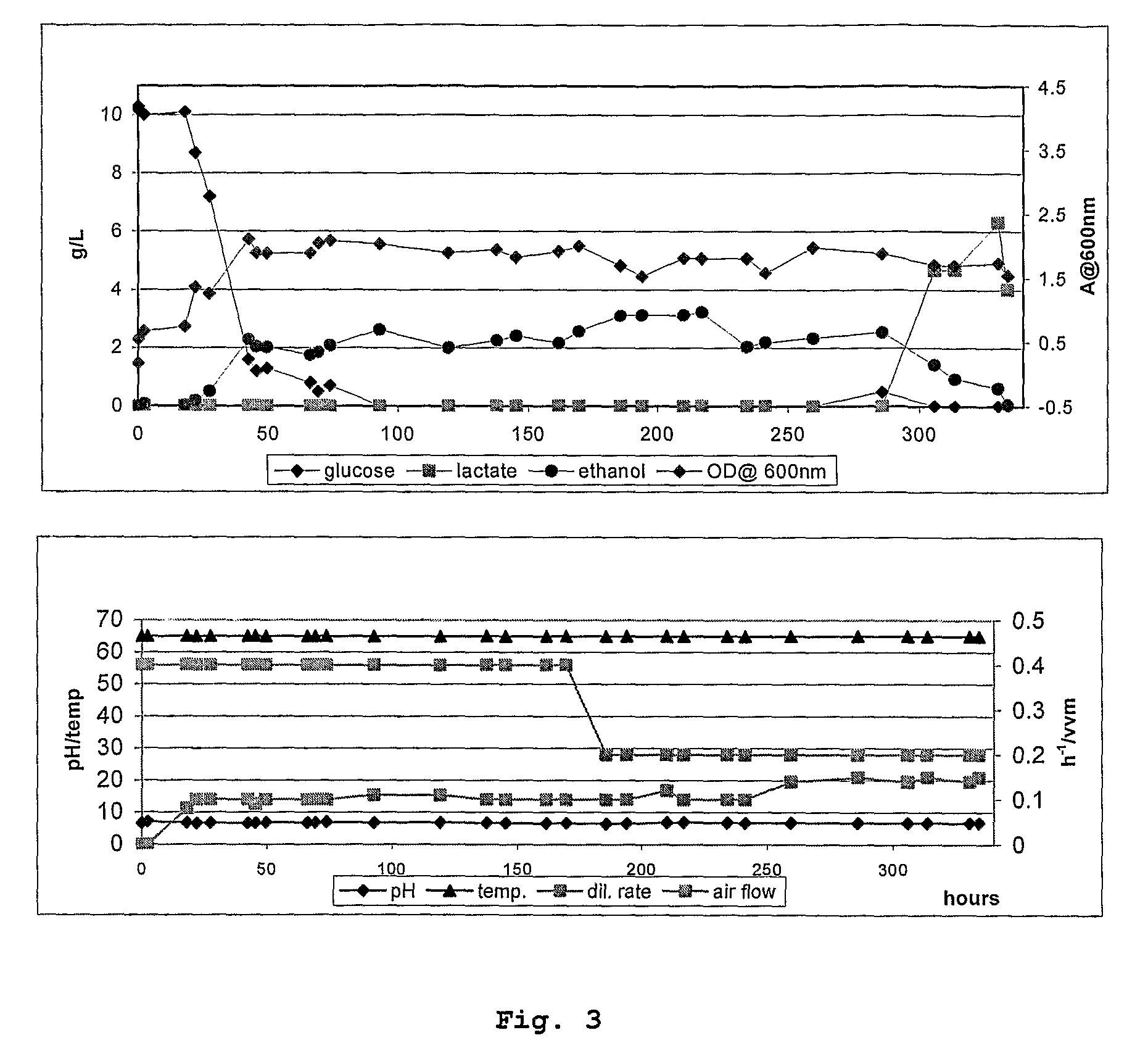Thermophilic Microorganisms with Inactivated Lactate Dehydrogenase Gene (LDH) for Ethanol Production
a technology of lactate dehydrogenase and thermophilic bacteria, which is applied in the direction of microorganisms, biofuels, bacteria based processes, etc., can solve the problems of difficult to find suitable thermophilic bacteria which can produce ethanol efficiently, strains unsuitable for ethanol production, and often compromised fermentation
- Summary
- Abstract
- Description
- Claims
- Application Information
AI Technical Summary
Benefits of technology
Problems solved by technology
Method used
Image
Examples
example 1
Development of the LDH Knockout Vector
[0036]A partial Idh gene fragment of approx 800 bp was subcloned into the temperature sensitive delivery vector pUB190 (SEQ ID NO. 1) using HindIII and XbaI resulting in a 7.7 kb plasmid pUB190-Idh (FIG. 4 and SEQ ID NO. 2). Plasmid pUB190 has been deposited at NCIMB as indicated below. Ten putative E. coli JM109 (pUB190-Idh) transformants were verified by restriction analysis and two cultures used to produce plasmid DNA for transformation purposes. Digestion of pUB190-Idh with HindIII and XbaI releases the expected Idh fragment.
Transformation of Geobacillus thermoglucosidasius 11955 with pUB190-Idh
[0037]Transformants were obtained with all three plasmids tested after 24-48 hrs at 54° C. with kanamycin selection. The Idh transformants were purified from Geobacillus thermoglucosidasius (Gt) 11955 and verified by restriction analysis using HindIII and XbaI.
LDH Gene Knockout
[0038]Gene knockout was performed by integration o...
example 2
Generation of an LDH Mutant by Gene Replacement
[0058]A further strategy was designed to generate a stable mutation of the LDH gene in Geobacillus thermoglucosidasius NCIMB 11955 by gene replacement. This strategy involved the generation of a 42 bp deletion close to the middle of the coding sequence, and the insertion at this position of 7 bp introducing a novel NotI restriction site. This inserted sequence was intended to cause a frame-shift mutation downstream. The strategy involved generating the deletion using 2 PCR fragments using oligo primers introducing the novel NotI site. Primers were designed based on the partial sequence of the LDH coding region from 11955. The sequence of the primers used is shown below.
Fragment 1:Fragment 2:
Preparation of Genomic DNA.
[0059]Genomic DNA was prepared from 11955 to serve as template for PCR. Cells from a 20 ml overnight culture of 11955 grown in TGP medium at 52° C. were collected by centrifugation at 4,000 rpm for 20 mins. The cell pellet ...
example 3
Ethanol Production by the Wild-Type Thermophile
[0066]Reproducible growth and product formation was achieved in fed-batch and continuous cultures for the wild-type thermophile. Tables 1, 2 and 3 show the conditions used in the fermentation process.
TABLE 1Vol. / LFinal Conc.ChemicalNaH2PO4•2H2O25mMK2SO410mMCitric acid. H2O2mMMgSO4•7H2O1.25mMCaCl2•2H2O0.02mMSulphate TE Solution5mlSee belowNa2MoO4•2H2O1.65μMYeast Extract10gAntifoam0.5mlPost-auto addns:4M Urea25ml100mM1% Biotin300μl12μM20% Glucose250ml1%
TABLE 2Sulphate Trace Elements Stock SolutionMediumChemicalgl−1 (ml)Conc.Conc. H2SO45mlZnSO4•7H2O1.4425μMFeSO4•7H2O5.56100μMMnSO4•H2O1.6950μMCuSO4•5H2O0.255μMCoSO4•7H2O0.56210μMNiSO4•6H2O0.88616.85μMH3BO30.08Deionised H2O (final1000mlvol.)
TABLE 3Fermenter ConditionsInoculum10% v / vVolume1000 mlTemperature60° C.PH7.0 controlled with NaOHAeration0.4 vvmN2 flow0.05 lpmAgitation400 rpmMediaUrea Sulphates for FermentersSugar feed100 ml 50% glucose
TABLE 4Summary of improvements in growth of wild-t...
PUM
| Property | Measurement | Unit |
|---|---|---|
| Temperature | aaaaa | aaaaa |
| Temperature | aaaaa | aaaaa |
| Temperature | aaaaa | aaaaa |
Abstract
Description
Claims
Application Information
 Login to View More
Login to View More - R&D
- Intellectual Property
- Life Sciences
- Materials
- Tech Scout
- Unparalleled Data Quality
- Higher Quality Content
- 60% Fewer Hallucinations
Browse by: Latest US Patents, China's latest patents, Technical Efficacy Thesaurus, Application Domain, Technology Topic, Popular Technical Reports.
© 2025 PatSnap. All rights reserved.Legal|Privacy policy|Modern Slavery Act Transparency Statement|Sitemap|About US| Contact US: help@patsnap.com



